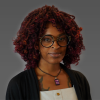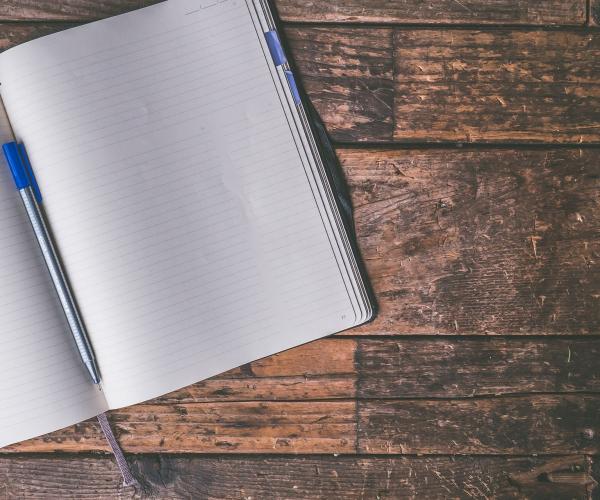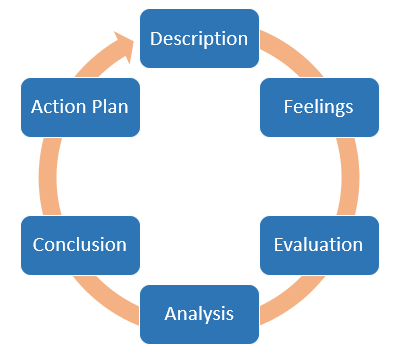
by Milaun Murry


by Milaun Murry
“It is not sufficient to have an experience in order to learn. Without reflecting on this experience it may quickly be forgotten, or its learning potential lost.” - Graham Gibbs
One of the steps in David Kolb's experiential learning process is "reflective observation" (if you want to learn more about the Experiential Learning Process check out our blog on it here). But what is reflection and how do you accomplish it?
Reflection is consciously looking at and exploring your experiences, feelings, thoughts and/or actions to derive new meaning and learn from it. Active reflection can be a valuable tool for growth. Why? Reflecting on your experiences and new information allows you the opportunity to view things from different perspectives, identify alternative approaches, fill gaps within your knowledge and learn or build upon new skills.
Gibbs’ reflective cycle is a great tool to guide you regardless of what method of reflection is chosen. Each stage represents a new set of questions or considerations as you think critically about your experiences.

Gibbs' Reflective Cycle
Description: What happened?
Feelings: What were you thinking and feeling?
Evaluation: What was good and bad about the experience?
Analysis: What sense can you make of the situation?
Conclusion: What else could you have done?
Action Plan: If it arose again what would you do?
There are a lot of wonderful tools available to assist with the reflection process. These can be used as part of a curriculum or for individual personal exploration:
Reflective Journal – This could be a physical journal or a public blog. Use a reflective journal to organize your thoughts and progress over the course of the project/experience.
Multimedia (Digital Stories & Podcasts) – Create a short (2-4 minutes) digital clip that includes a narrative told in first person with optional videos/graphics to record your experience.
Interactive Micro-Blogging – Yes, Twitter can be a tool for reflection! Micro-blogging differs from traditional blogging primarily in the length of the content. This is a great tool for capturing thoughts, feelings and experiences “in the moment” for later reference.
The great thing about each of these tools is that they don't require a lot of additional time/effort and can be a truly enjoyable experience in itself.
Start with the basics: Who, What, When, Where, and Why. Then dig a little bit deeper:
Gibbs, G (1988). Learning by doing: a guide to teaching and learning methods. Oxford: Further Education Unit, Oxford Polytechnic
Moon, J. A. (2004). A Handbook of Reflective and Experiential Learning: Theory and Practice. Routledge. (Particularly the resources on reflective writing pgs. 184-189, ebook available)
Add new comment